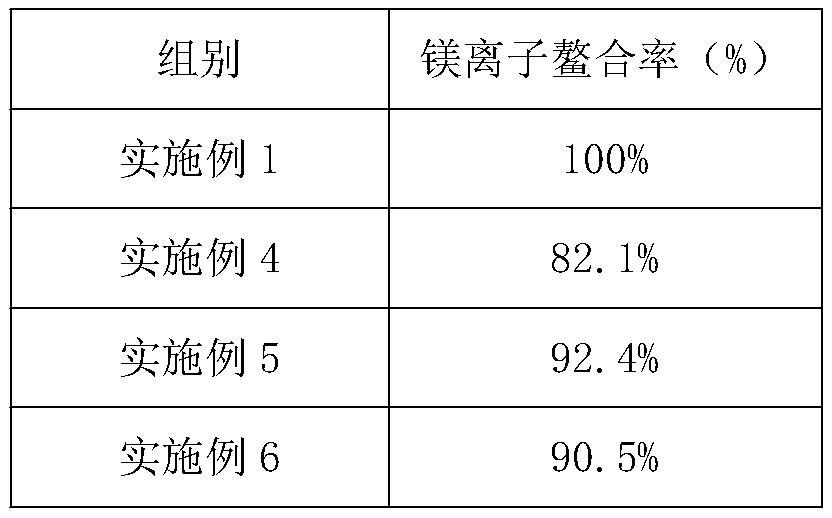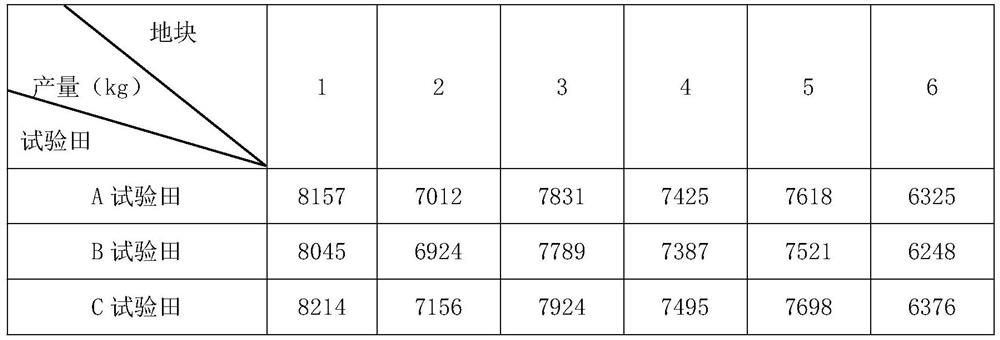Method for producing amino acid fertilizer from dead animals
A technology of dead animals and amino acids, which is applied in the field of amino acid fertilizer production by using dead animals, can solve problems such as unsuitable for large-scale production, low amino acid yield, easy decomposition of amino acids, etc., to improve metal ion chelation rate, easy hydrolysis, and process simple effect
- Summary
- Abstract
- Description
- Claims
- Application Information
AI Technical Summary
Problems solved by technology
Method used
Image
Examples
Embodiment 1
[0041] (1) Slitting and mincing the dead chicken carcass to a size of 10-30mm, and sterilizing with ultraviolet rays to obtain raw material A;
[0042] (2) Mix rice bran, bran, and crushed litter to obtain 20 parts of mixture B, add 2 parts of microbial fermentation agent and 3 parts of deionized water, and ferment at 80°C for 20 hours to obtain pre-fermentation C;
[0043] Wherein in the microbial starter, the weight ratio of Bacillus subtilis, Staphylococcus xylosus, Lactobacillus plantarum, yeast, Penicillium chrysogenum is: 7:5:12:10:7;
[0044] (3) Add the raw material A obtained in step (1) to the pre-fermented product C obtained in step (2), so that the weight ratio of raw material A to pre-fermented product C is 3:1, and continue to ferment for 72 hours at 80°C, and let it dry in the air after completion Dry crushing to obtain powdery fermented product D;
[0045] (4) using petroleum ether to extract the powdery fermented product D obtained in step (3), wherein the ma...
Embodiment 2
[0049](1) Slitting and mincing the dead chicken carcass to a size of 10-30mm, and sterilizing with ultraviolet rays to obtain raw material A;
[0050] (2) Mix bran, cornmeal, and straw powder to obtain 25 parts of mixture B, add 4 parts of microbial starter, 5 parts of deionized water, and ferment at 95°C for 25 hours to obtain pre-fermentation product C;
[0051] Wherein in the microbial starter, the weight ratio of Bacillus subtilis, Staphylococcus xylosus, Lactobacillus plantarum, yeast, and Penicillium chrysogenum is: 10:6:13:15:8;
[0052] (3) Add raw material A obtained in step (1) to pre-fermented product C obtained in step (2), make the weight ratio of raw material A to pre-fermented product C 5:1, continue fermentation at 95°C for 66 hours, and let it dry in the air after completion Dry crushing to obtain powdery fermented product D;
[0053] (4) Using petroleum ether to extract the powdery fermented product D obtained in step (3), wherein the mass volume ratio of th...
Embodiment 3
[0057] (1) Slitting and mincing the dead chicken carcass to a size of 10-30mm, and sterilizing with ultraviolet rays to obtain raw material A;
[0058] (2) Mix rice bran, bran, cornmeal, straw powder, and crushed litter to obtain 22 parts of mixture B, add 3 parts of microbial starter, 4 parts of deionized water, and ferment at 85°C for 30 hours to obtain a pre-fermented product C;
[0059] Wherein in the microbial starter, the weight ratio of Bacillus subtilis, Staphylococcus xylosus, Lactobacillus plantarum, yeast, Penicillium chrysogenum is: 8:7:14:13:9;
[0060] (3) Add the raw material A obtained in step (1) to the pre-fermented product C obtained in step (2), so that the weight ratio of raw material A to pre-fermented product C is 4:1, continue to ferment for 60 hours at 85°C, and let it dry in the air after completion Dry crushing to obtain powdery fermented product D;
[0061] (4) using petroleum ether to extract the powdery fermented product D obtained in step (3), ...
PUM
 Login to View More
Login to View More Abstract
Description
Claims
Application Information
 Login to View More
Login to View More - R&D
- Intellectual Property
- Life Sciences
- Materials
- Tech Scout
- Unparalleled Data Quality
- Higher Quality Content
- 60% Fewer Hallucinations
Browse by: Latest US Patents, China's latest patents, Technical Efficacy Thesaurus, Application Domain, Technology Topic, Popular Technical Reports.
© 2025 PatSnap. All rights reserved.Legal|Privacy policy|Modern Slavery Act Transparency Statement|Sitemap|About US| Contact US: help@patsnap.com



